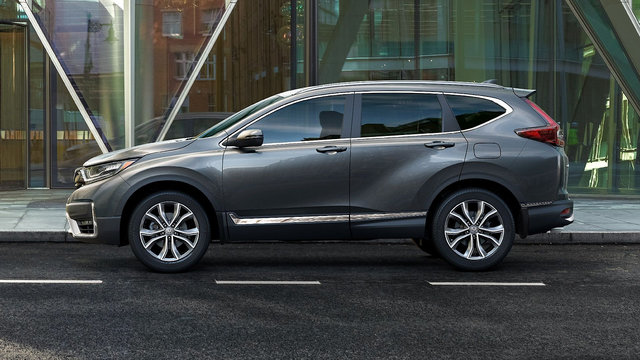The compact SUV category is filled with vehicles that are as interesting as they are different. The fun part is measuring them against each other, an exercise that allows us to discover which ones end up being interesting candidates for those looking for a versatile vehicle.
Comparing the 2021 Honda CR-V to the 2021 Kia Sportage reveals two vehicles that can satisfy any buyer, but when you start to face the important points, you realize that there is no substitute for experience. In fact, the CR-V dominates where it counts. The following contrasts prove it.
Cargo volume
If there's one thing that's important about an SUV, it's the amount of cargo space you have in the back. It's understandable that not every model in the same class can offer the same amount of space, because their designs are different. However, it feels like we have models from different classes here.
Inside the CR-V, behind the first row of seats, you can count on 2146 liters of space. With the Sportage, you're limited to 1,565 liters. That's a difference of almost 600 liters, more than the trunk space of a car.
Depreciation
While the value of Kia products has increased over the past 10-15 years, it still can't compete with Honda vehicles. After four years on the road, the Honda CR-V will have retained about 10% more of its initial value than the Kia Sportage. This is reflected everywhere, with better lease terms, a better resale price and a greater interest in the model when you decide to trade it in.
Fuel Economy
Another area where there is a world of difference between the 2021 Honda CR-V and the 2021 Kia Sportage is at the gas station. With a CR-V, the advertised fuel economy is 7.7 liters per 100 kilometers with a front-wheel drive model, 8.1 liters for an all-wheel drive version. Unfortunately, the Sportage doesn't measure up with respective ratings of 9.0 and 10.0 L/100 km.
These results hold for the two base engines of the models. Kia offers a second, slightly more powerful engine, but it's also more fuel-hungry, averaging 11 L/100 km, which is way too much for a 4-cylinder engine.
As a bonus, the Honda CR-V guarantees better build quality, a higher level of comfort on the highway, as well as a better reliability rating.
All in all, when you weigh the pros and cons, the choice is easy.





